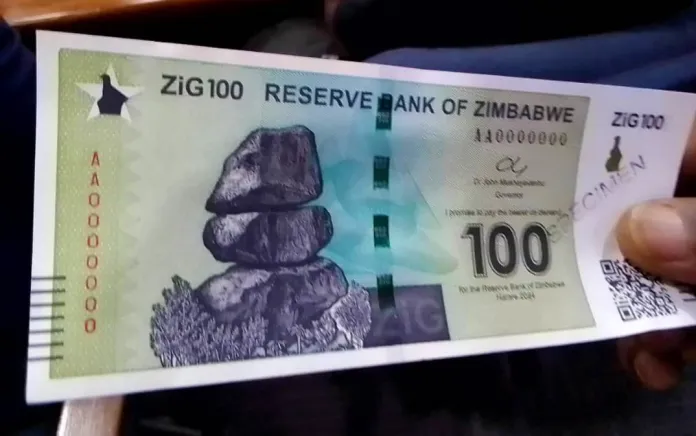Zimbabwe has taken a step towards stabilizing its currency woes by announcing the launch of a new currency called ZiG.
The move, set to be implemented on April 8, 2024, aims to address the country’s longstanding struggle with hyperinflation and currency depreciation.
Join our WhatsApp ChannelSpeaking at a press conference in Harare, Zimbabwean Central Bank Governor, John Mushayavanhu, emphasized the necessity of establishing a solid and stable national currency.
He stated, “It does not help to print money. Certainly, under my watch, it is not going to happen.” This declaration reflects a departure from previous attempts to salvage the Zimbabwean Dollar through unsustainable monetary policies.
The introduction of ZiG comes amidst a backdrop of economic challenges for Zimbabwe. The country has experienced a significant depreciation of its currency, with the Zimbabwean dollar losing about 80% of its value in the official market this year alone.
READ ALSO: Economic Hardship: Borrow A Leaf From Zimbabwe, Obasanjo Advises Nigerian Govt
As a result, over 80% of transactions are now conducted in US dollars, indicating a loss of confidence in the national currency.
The decision to launch ZiG follows President Emmerson Mnangagwa’s earlier indication of the government’s intention to introduce a “structured currency.” Finance Minister Mthuli Ncube had suggested that this new currency could potentially be backed by gold.
These discussions culminated in the central bank’s decision to delay its monetary policy statement to refine the plan.
ZiG will have an initial exchange rate set at 13.56 per dollar and will be backed by a diverse basket of foreign currencies, gold, and other precious metals.
Additionally, a new interest rate of 20% has been established, marking a departure from the previous rate of 130% on the old Zimbabwean Dollar.
The introduction of ZiG represents the sixth attempt by the Zimbabwean Central Bank to establish a sustainable currency since the country’s economic crisis in 2008 when inflation soared to 500 billion percent. Despite previous setbacks, authorities remain hopeful that ZiG will provide a much-needed solution to the country’s currency woes.
As John Mushayavanhu assumed office as central bank governor, earlier than planned, he has pledged to adopt more orthodox monetary policies during his tenure.
This shift signals a commitment to implementing measures aimed at restoring economic stability and rebuilding confidence in Zimbabwe’s financial system.
In summary, the launch of ZiG marks a pivotal moment in Zimbabwe’s economic history, offering a renewed opportunity to address longstanding currency challenges and pave the way for sustainable growth and stability.
Emmanuel Ochayi is a journalist. He is a graduate of the University of Lagos, School of first choice and the nations pride. Emmanuel is keen on exploring writing angles in different areas, including Business, climate change, politics, Education, and others.

















Follow Us